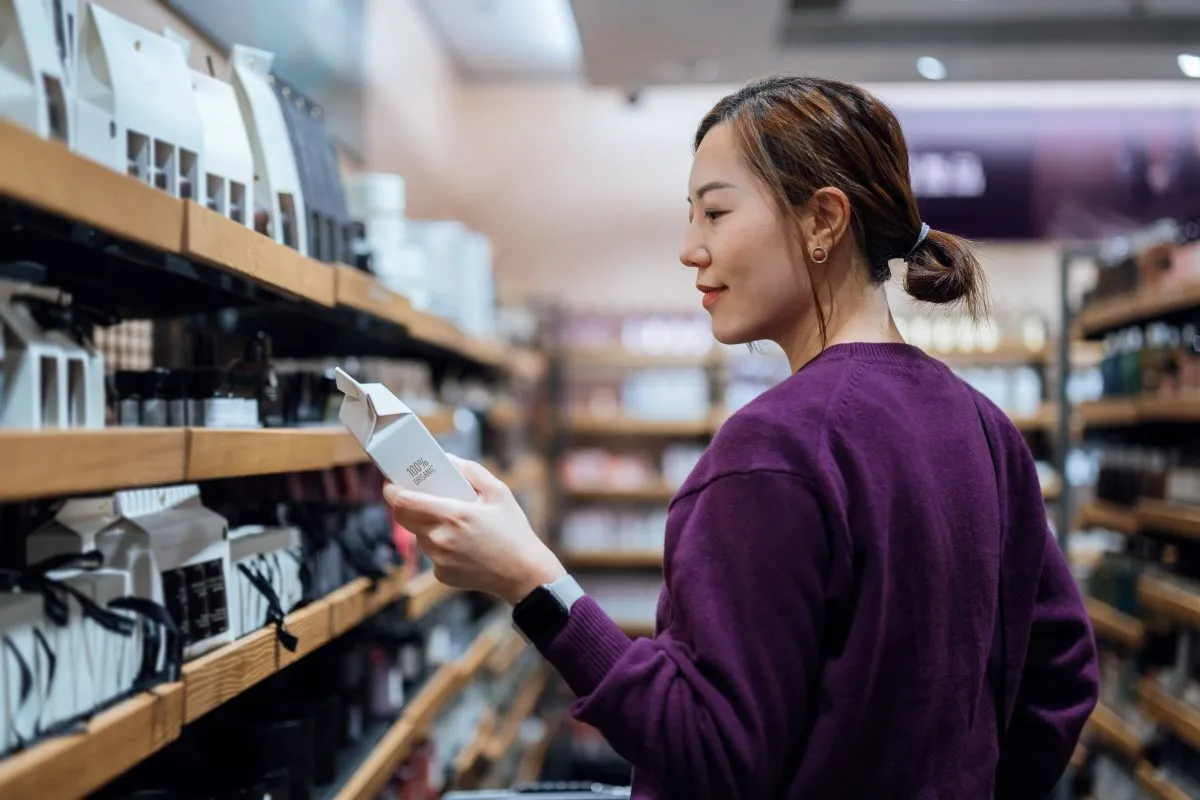K-Beauty’s Viral Rise Reshapes America
By
Rachel Steinberg
Last updated:
November 28, 2025
First Published:
November 28, 2025

Photo: NIQ
The New Era of K-Beauty in America
Korean beauty products are surging into the U.S. mainstream at a pace the industry has never seen before. U.S. sales of Korean cosmetics are projected to surpass 2 billion dollars in 2025, marking a 37 percent jump from the previous year. This extraordinary momentum is powered by TikTok virality, a new generation of diverse shoppers, and unprecedented retail expansion. What began as a niche segment limited to insiders and early adopters has evolved into a full-scale national phenomenon reshaping how Americans shop for skincare, makeup, and beauty technology.
How K-Beauty Became the New Battleground for U.S. Retailers
Across the country, retailers are in a fierce race to capture the fast-growing demand for Korean beauty brands. At Ulta locations, Korean lip tints, sunscreens, and tech-forward skincare devices are flying off the shelves. Ulta reported more than a 38 percent surge in Korean skincare sales in early 2025, with its newly introduced “K-beauty World” concept attracting significant foot traffic.
Sephora has also expanded aggressively, devoting entire feature walls in key flagship stores to Korean skin care and securing exclusive U.S. launches from brands such as Hanyul and Aestura. Big-box chains are not far behind. Walmart and Costco have widened their assortments to include essences, serums, and sheet mask packs, while smaller specialty retailers like Sukoshi are opening dozens of stores nationwide. The competition will intensify further in 2026 when Olive Young—South Korea’s largest beauty retailer—opens its first U.S. location in Los Angeles.
A Market Fueled by Record Korean Exports and Unstoppable Demand
South Korea is now the largest exporter of cosmetics to the United States, surpassing long-dominant France. In the first half of 2025, South Korea exported a record 5.5 billion dollars' worth of beauty goods, nearly 15 percent more than the year before. This rise continues even amid tariff uncertainty and shifting trade policies, with Korean brands temporarily absorbing added costs to keep prices stable for U.S. shoppers.
Consumer demand remains intense. Facial skincare is the strongest driver of revenue, while haircare has become the fastest-growing category. Hybrid products—such as tinted serums, multi-functional cushion foundations, and SPF-infused complexion items—are accelerating quickly thanks to their versatility and affordability.
TikTok as the Engine of K-Beauty’s Second Wave
The platform at the center of this explosion is TikTok. Posts tagged “K-beauty” or “Korean skin care” generate more than 250 million views each week. Gen Z and millennial consumers now make up nearly three-quarters of U.S. K-beauty shoppers, according to market research, and are heavily influenced by real-time reviews, texture tests, and “GRWM” content.
This viral attention has also pushed K-beauty brands toward greater inclusivity. When online creators criticized limited shade ranges in certain products, companies responded quickly, expanding foundations and complexion items to dozens of shades. The shift reflects the broader evolution of K-beauty’s “second wave,” which is more diverse, technology-enhanced, and mass-market than the earlier phase of the mid-2010s.
Retail Risks and the Fragility of Virality
The industry’s rapid ascent comes with challenges. Brands that depend heavily on TikTok face potential volatility if algorithms change or if regulatory actions alter how the platform operates. Executives and analysts have warned that a sudden shift in visibility could dramatically affect sales, especially for products that thrive on viral moments.
Innovation at the Heart of Korea’s Beauty Powerhouse
What sets K-beauty apart is its relentless pace of innovation. South Korea’s domestic cosmetics market is one of the most competitive in the world, with more than 28,000 licensed sellers as of 2024—double the number from five years earlier. This environment forces brands to develop new formulas, delivery systems, and biotechnology-driven ingredients at extraordinary speed. Leading companies experiment with everything from snail mucin to marine DNA extracts to advanced fermentation techniques.
Many innovations that originate in Korea quickly spread globally. The acquisitions of smaller brands following viral success are common, such as Amorepacific’s estimated 700-million-dollar purchase of COSRX after its snail mucin products became global best sellers.
The Road Ahead
Analysts expect the next phase of K-beauty to feature even more experimental ingredients, personalized AI-driven product recommendations, and deeper integrations between beauty devices and mobile apps. With South Korea pushing the boundaries of biotech innovation and U.S. retailers fiercely competing for market share, K-beauty’s influence is on track to accelerate rather than slow down.
K-beauty is no longer a trend—it’s a complete category transformation that is rewriting the rules of the American beauty industry.
Popular articles
Subscribe to unlock premium content
Frozen Riches on Kamchatka

Frozen Opulence in Lapland

Crystal Dreams in the Salt Flats

Frozen Riches on Kamchatka

Frozen Opulence in Lapland

Frozen Riches on Kamchatka









